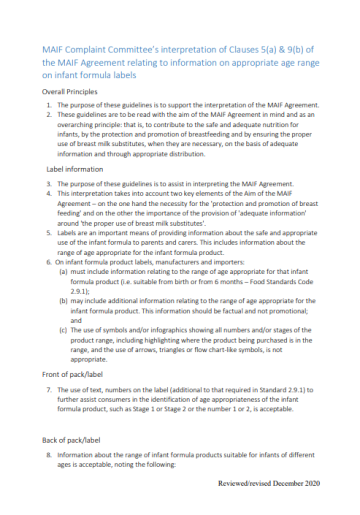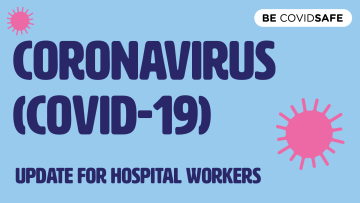Filter results
You can narrow down the results using the filters
Audience
Topics
Our work
Diseases
Year
22 results
-
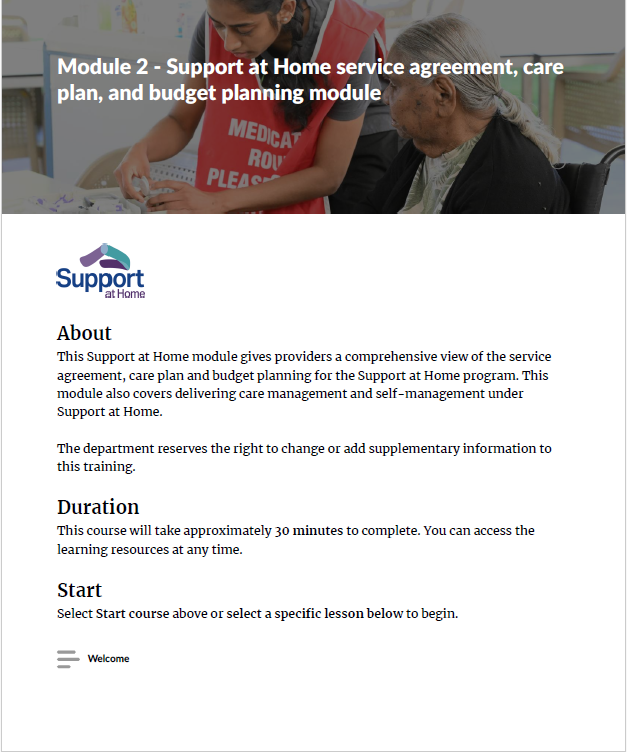
Support at Home provider training: Module 2 – Service agreement, care plan and budget planning
This page contains the link to the PDF version of the Support at Home service agreement, care plan, and budget planning module. Users will be able to download the PDF resource and access the training offline. -

Support at Home provider training: Module 1 – Assessment process and service delivery
This page contains the link to the PDF version of the Module 1 – Assessment process and service delivery. Users will be able download the PDF resource and access the training offline. -
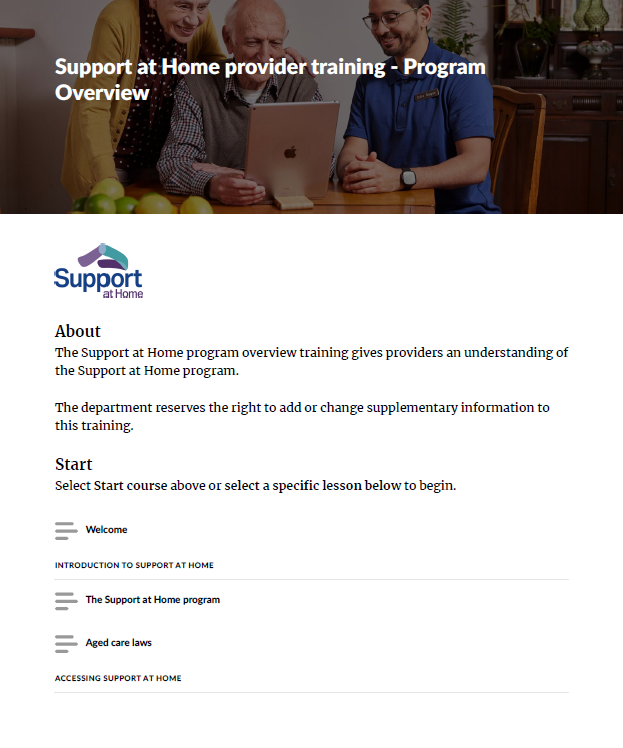
Support at Home provider training – Program Overview
This page contains the link to the PDF version of the Support at Home provider training – Program Overview. Users will be able to download the PDF resource and access the training offline. -
Aged Care Assessor App – Sideloading files
Aged care assessment organisations can distribute the Aged Care Assessor Application installation files, so their IT Administrator staff can manually install (sideload) the app on a Windows device for assessors. -
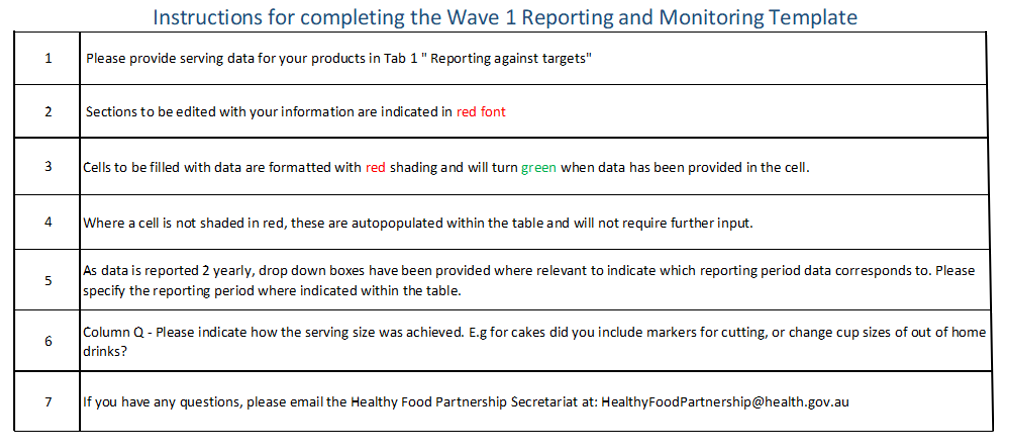
Industry Guide to Voluntary Serving Size Reduction – Reporting and Monitoring template
The Industry Guide to Voluntary Serving Size Reduction Reporting and Monitoring template is to be used by participating companies to report the serving sizes of their products at baseline (2023) and 2-yearly. -
Aged Care Assessor App
Aged care assessors can use this app to conduct assessments (using the Integrated Assessment Tool or Australian National Aged Care Classification Assessment Tool). If there is no internet, first download client information from the assessor portal and upload the assessment when back in the office. -
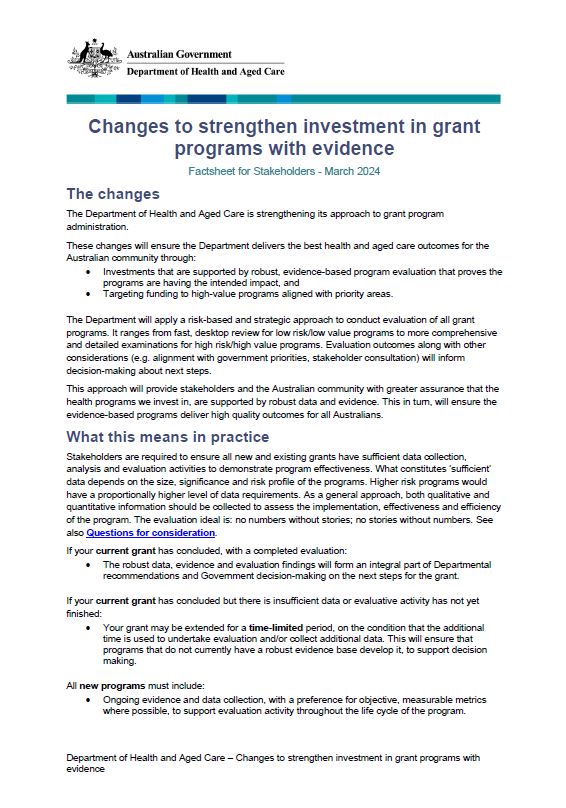
Changes to strengthen investment in grant programs with evidence
This fact sheet provides advice to stakeholders who are thinking of submitting a grant proposal or who may already have a grant proposal with the department. -
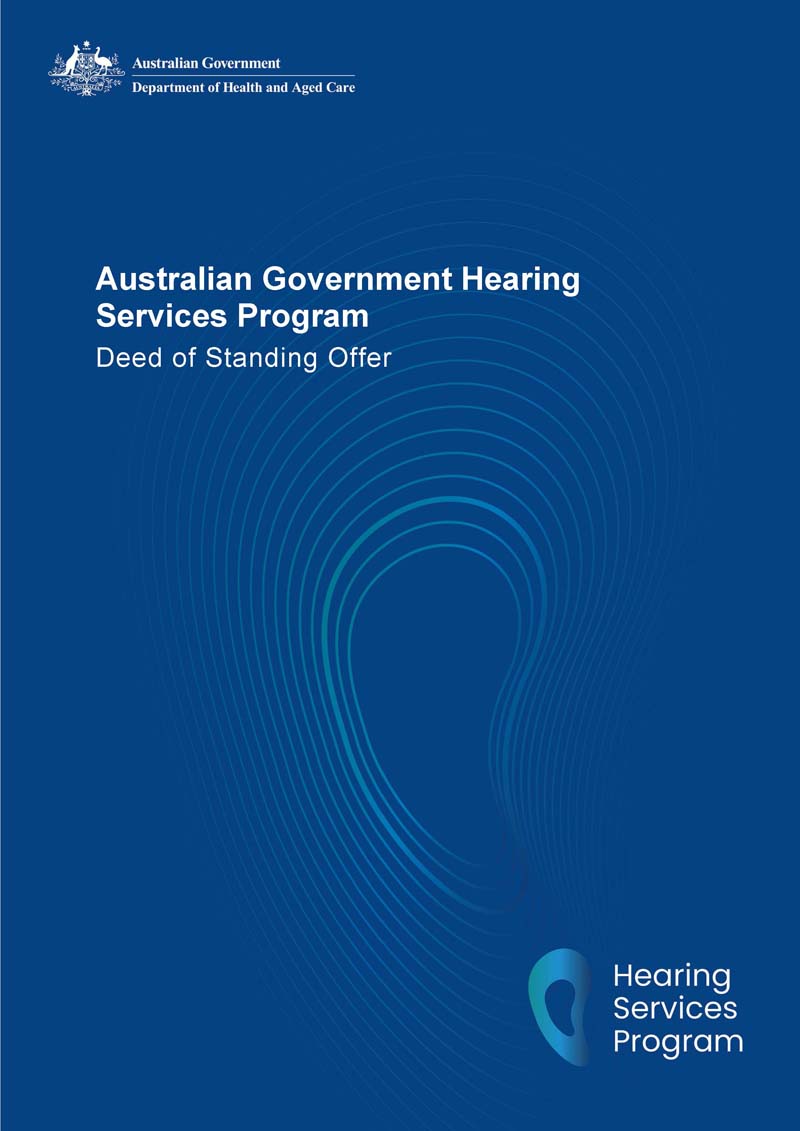
Hearing Services Program deed of standing offer
This document is a standard deed of standing offer between the Hearing Services Program and suppliers of hearing devices. -
 1:44
1:44Pregnancy and alcohol – the Australian Medical Association's perspective
Dr Steve Hambleton, a former Australian Medical Association president, talks about and supports the Women Want to Know initiative. He encourages all health professionals to discuss the risks of alcohol with pregnant women. -
My Aged Care assessor portal
Aged care assessors must use this portal to manage referrals, assessments and support plans. -
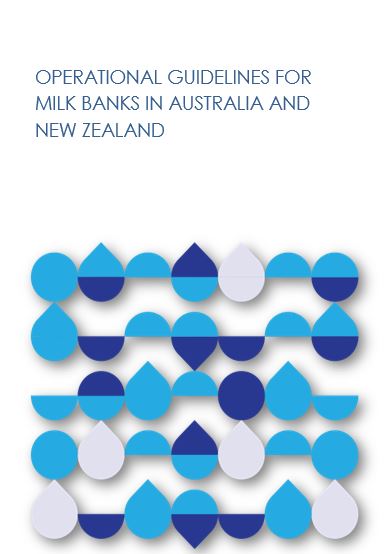
Operational guidelines for milk banks in Australia and New Zealand
The guidelines outline the principles for processing donated human milk to reduce or eliminate pathogens while retaining nutrition. -
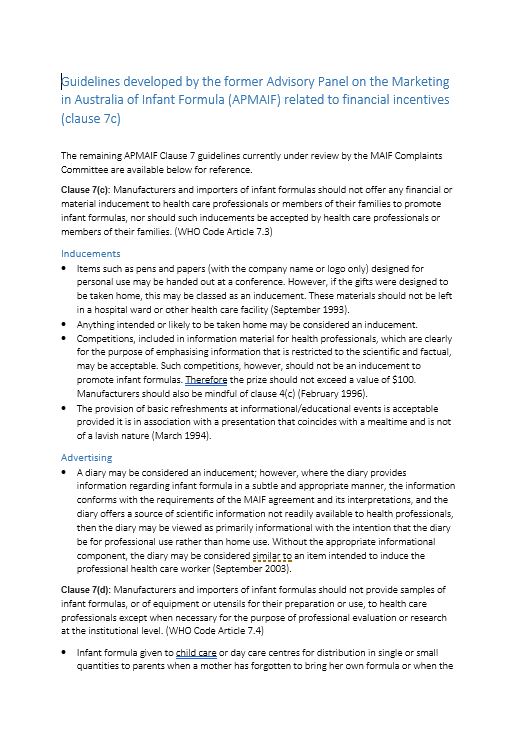
Guidelines developed by the former Advisory Panel on the Marketing in Australia of Infant Formula related to financial incentives (clause 7c)
This Marketing in Australia of Infant Formulas (MAIF) Agreement Complaints Committee guidance document aims to help interpret clause 7c of the MAIF Agreement, which relates to financial or material inducement to promote infant formulas. -
Marketing in Australia of Infant Formulas (MAIF) Agreement interpretation guides
The documents in this collection help interpret specific clauses of the Marketing in Australia of Infant Formulas (MAIF) Agreement.
-
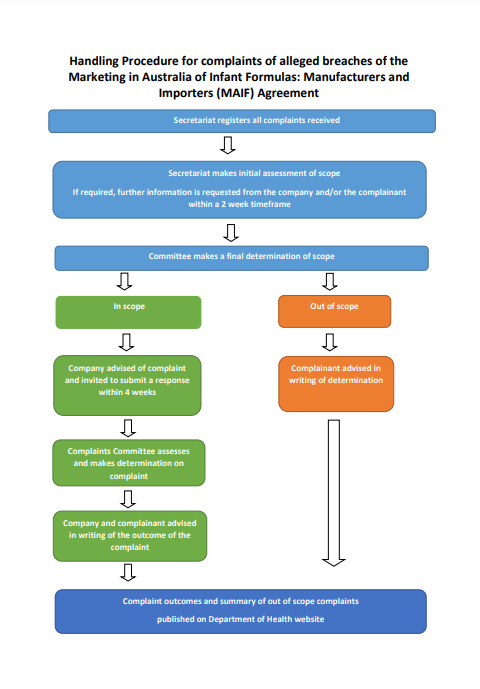
Handling procedure for complaints of alleged breaches of the MAIF Agreement – Flowchart
Handling procedure for complaints of alleged breaches of the Marketing in Australia of Infant Formulas: Manufacturers and Importers (MAIF) Agreement -
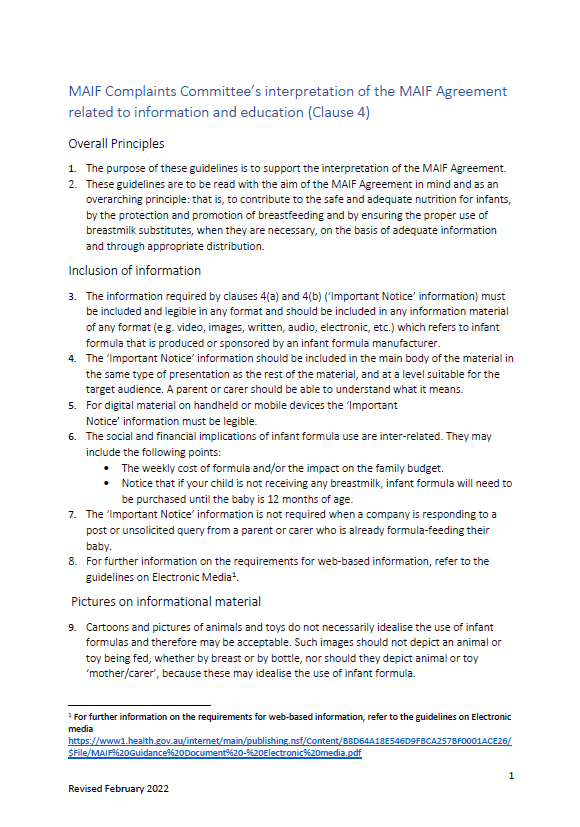
Guidance document for interpretation of the MAIF Agreement – Information and education (clause 4)
This Marketing in Australia of Infant Formulas (MAIF) Agreement Complaints Committee guidance document aims to help interpret clause 4 of the MAIF Agreement, which relates to information and education. -
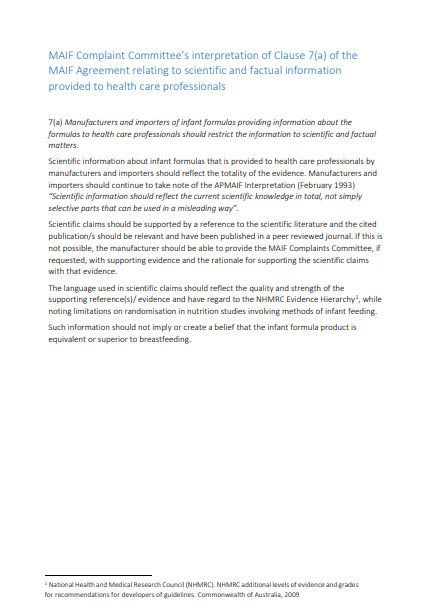
Guidance document for interpretation of the MAIF Agreement – Scientific and factual information provided to healthcare professionals (clause 7a)
This Marketing in Australia of Infant Formulas (MAIF) Agreement Complaints Committee guidance document aims to help interpret clause 7a of the MAIF Agreement, which relates to scientific and factual information provided to healthcare professionals. -
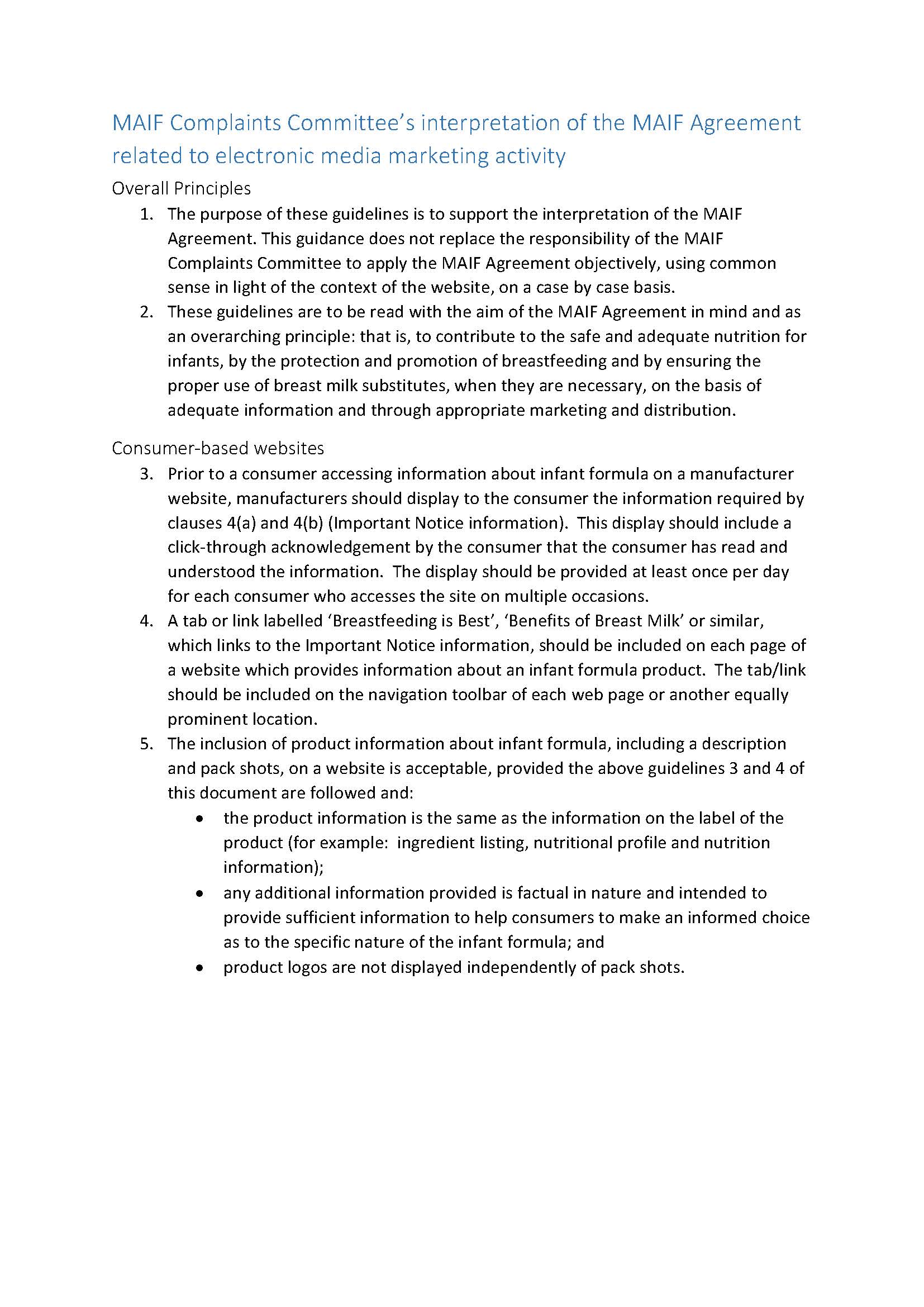
Guidance document for interpretation of the MAIF Agreement – Electronic media
This Marketing in Australia of Infant Formulas (MAIF) Agreement Complaints Committee guidance document aims to help interpret information related to electronic media in the MAIF Agreement. -
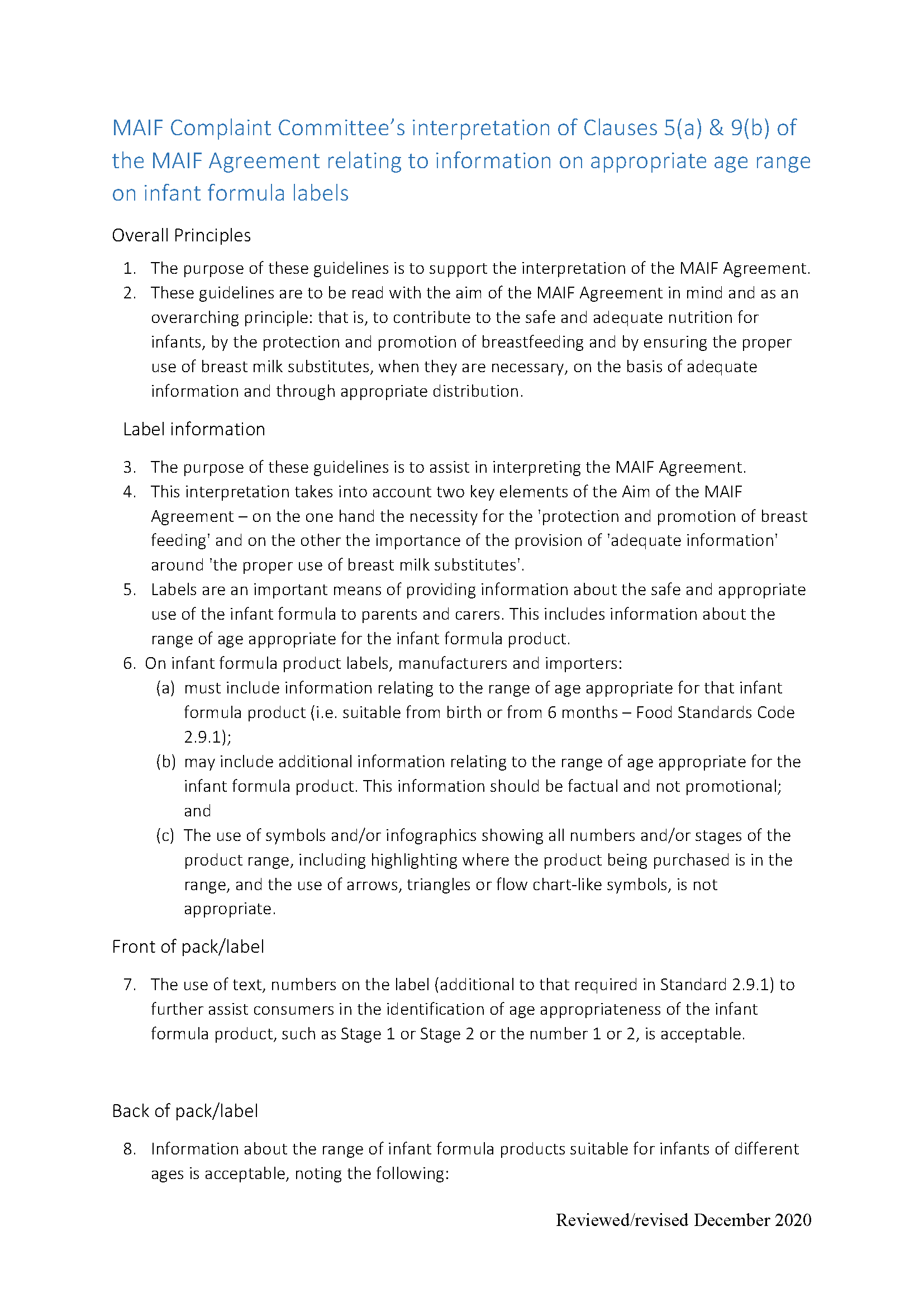
Guidance document for interpretation of the MAIF Agreement – Appropriate age range on infant formula labels (clauses 5a and 9b)
This Marketing in Australia of Infant Formulas (MAIF) Agreement Complaints Committee guidance document aims to help interpret clauses 5a and 9b of the MAIF Agreement, which relate to appropriate age range on infant formula labels. -
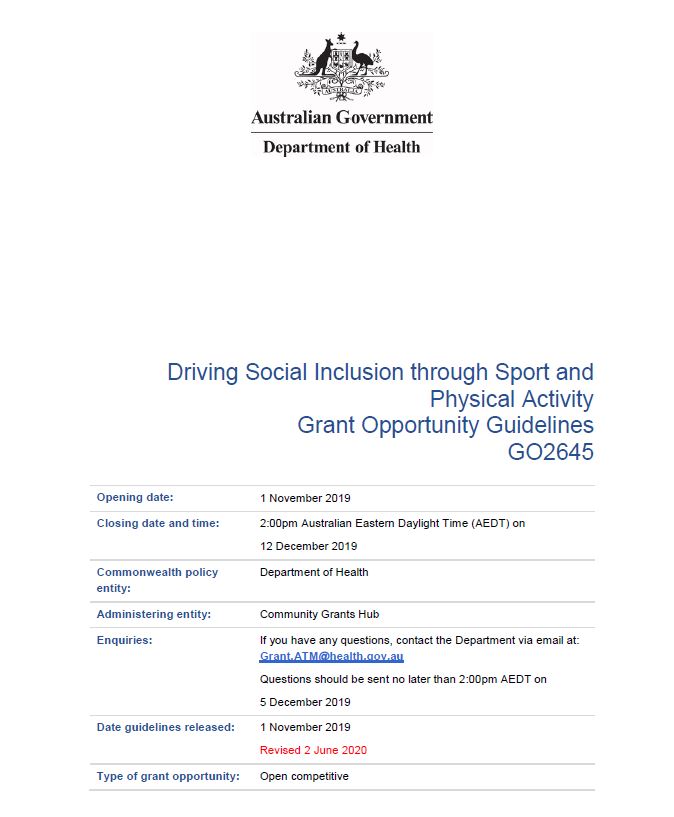
Driving Social Inclusion through Sport and Physical Activity Grant Program Grant Opportunity Guidelines
The guidelines organisations used to apply for a grant under the Driving Social Inclusion through Sport and Physical Activity Grant Program. -

PHLN Recommendations for Non-PHLN Laboratories Undertaking Testing for SARS-CoV-2 (the virus that causes COVID-19)
This Public Health Laboratory Network document provides guidance to accredited public, private and hospital laboratories across Australia, who test for severe acute respiratory syndrome coronavirus 2 (SARS-CoV-2), the virus that causes COVID-19. -

Coronavirus (COVID-19) Primary Care Package – Practice Incentive Payments
An information sheet for general practices about temporary increases to incentive payments for general practices as they deal with the coronavirus (COVID-19). These incentive payments will increase support for bulk billed services and ensure patients keep access to essential face-to-face care. -
The new normal with COVID-19
This webinar was jointly presented by the Department of Health and Catholic Health Australia. It discussed how the hospital system is adjusting to the new normal with COVID-19.




